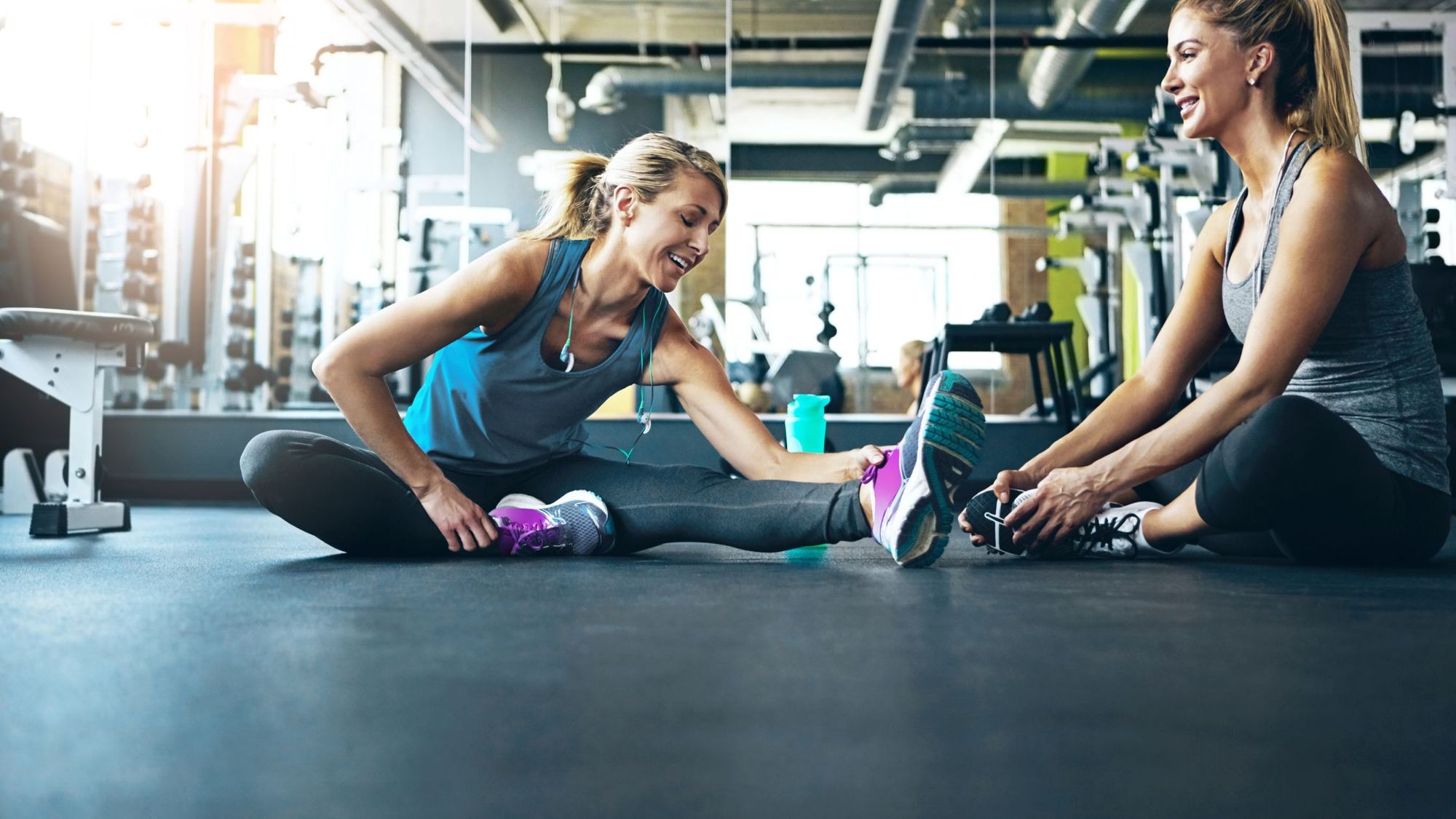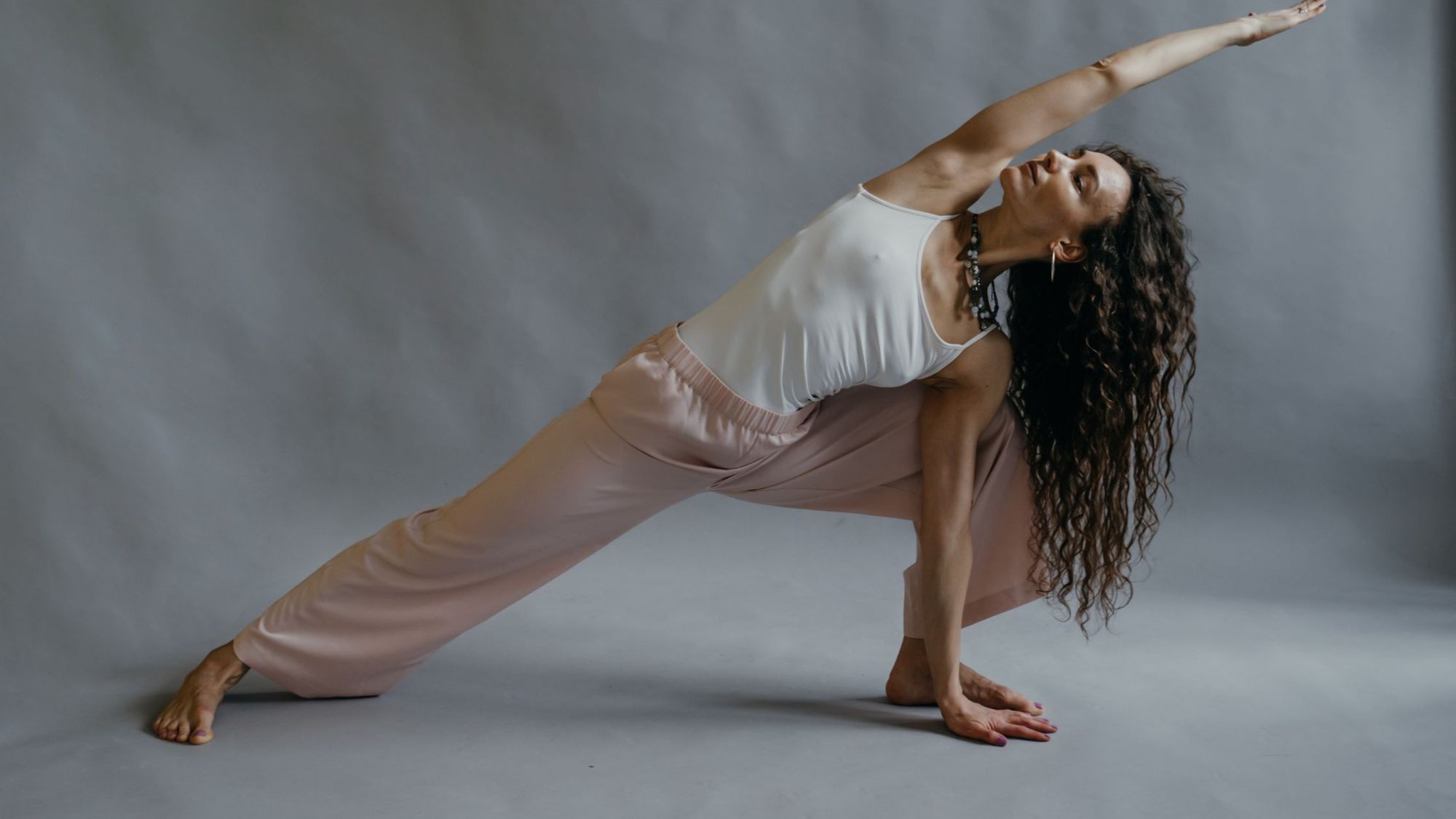
Some of you might think it doesn’t matter how flexible you are. However, there are many health benefits of being flexible, and that’s why you should learn how to improve flexibility.
When you improve your flexibility, you’ll notice better overall mobility and athletic performance, less sore muscles after exercise, better range of motion, less back pain, less stiffness, and reduced risk of injury.
Flexibility helps you live your life with greater ease and less pain. You’ll be able to move your muscles and joints with less restriction, less pain, and much more freely.
Even as an adult, there are ways to improve your flexibility a great amount. There are many routine stretches to improve flexibility, supplements to improve flexibility, hot yoga classes that help, and more.
Below are 6 tips on how to improve flexibility:

1. Be Cognizant of Your Posture
Tight muscles and stiffness cause reduced flexibility, and sitting with poor posture can cause tight muscles and stiffness. For good posture, keep a straight back, with your ears in line with your shoulders, an engaged core keeping yourself upright, and your chin raised. Use computer monitor risers to ensure your computer is at eye level, which helps you maintain good posture. Remember that poor posture doesn’t just cause tight muscles, it also reduces that healthy blood flow you need for better flexibility.

2. Do Certain Stretches to Improve Flexibility
Stretching isn’t just something you should do before and after a workout. Yes, you should stretch for this reason, but you should also do stretches at home, several times per day, to keep your body flexible and limber.
For example, if you have tight hamstrings (which is very common) you should be addressing this issue on a daily basis. Tight hamstrings are often caused by a sedentary job or a sedentary lifestyle. If you want to know how to improve flexibility, note that tight hamstrings will dramatically reduce your flexibility. This is why one of the best stretches to improve flexibility is the hamstring stretch.
You can easily stretch your hamstrings at home with a resistance band. Lay on the floor and lift one leg. Hook the end loop of your resistance band under your foot. Try to keep your leg straight (a partial bend is okay) and pull your leg towards you using the resistance band. You should feel a nice stretch in your hamstring. Hold for 15 seconds and repeat a few times on each leg. If this sounds confusing, try looking up hamstring stretches on YouTube for guided tutorials.
When it comes to how to improve flexibility, a flexible spine is also essential. Do the ‘cat cow’ stretch every day for improved spinal mobility. Start on all fours with a straight back, knees under hips. Inhale and arch your back as much as you can, allowing your stomach to drop toward the ground. Then, exhale and round your back as much as you can, allowing your head to drop and feeling the stretch in your spine. Repeat for 12 reps.
Remember that stretching can be static, dynamic or ballistic. Static stretching involves holding a part of your body to its maximum safe range of motion (ROM), and holding it for at least several seconds. Dynamic stretching includes constant movement through that ROM, while ballistic stretching uses rapid movement that bounces you within the ends of your ROM.
The way that stretching works is by reducing the stiffness in your muscles and tendons, helping them to lengthen, as well as increasing your neurological tolerance to a greater ROM. Dynamic stretching appears to be the best type, as it is safe and doesn’t reduce muscle power. Static stretching, on the other hand, can cause a short-term drop in strength. Ballistic stretching’s rapid movements may cause injury as the muscles’ and tendons’ reflexes can’t stop you from over-stretching in time.
It’s best to stretch when your muscles are warm, which leads us to our next tip on how to improve flexibility: attending hot yoga classes.
3. Hot Yoga
All yoga will be great for improving flexibility, but hot yoga is one of the best tips on how to improve flexibility. When your muscles are warm, they can stretch easier.
In general, yoga is one of the best ways to improve your flexibility. Regular and consistent yoga practice can help you become more flexible, and yoga will also help reduce stress. A study of 56 women between 50 and 79 years old tested the benefits of weekly Hatha yoga classes over five months, to see if the practice can improve flexibility at any age. Over time, yoga increased spinal and hamstring flexibility, and it didn’t matter how old they were.
Another trial set out to see if Hatha yoga could improve flexibility, alongside overall severity scores, in people with osteoarthritis. Compared to conventional therapeutic exercises, yoga practice led to double the increase in knee joint flexion (the ability to bend your knee). Overall disability, pain, walking time, swelling and tenderness improved more, too. Hatha yoga is the most commonly practiced type of yoga in Western countries, so classes are accessible in most areas.
4. How to Improve Flexibility With Foam Rolling
Everyone should have a foam roller at home. There are many benefits of foam rolling, including improved flexibility, and foam rollers are very affordable at under $30.
You may have heard of using foam rollers as a way to soothe sore muscles after exercise or roll out tight muscles, but foam rolling could also improve flexibility. A review of 21 trials found that using foam rolling as part of your warmup can give you a small but significant flexibility boost. While this was only a 4% increase, these differences can add up over time. Foam rollers didn’t help participants become more flexible when used after exercise, however.
5. Collagen Supplements
Around one-third of the protein in your body is collagen. It contributes to tissue flexibility and is found in your tendons, ligaments, bones and skin. Because of this, supplementing with collagen could help you to become more flexible. Exercises like stretching and yoga are great, but you need the building blocks for new muscle and connective tissue.
Your joints also make use of collagen, and while we focus on muscle and tendon flexibility, your joints play a role in flexibility too. As a student remedial massage therapist, I examine clients’ muscle and tendon flexibility using active ROM tests and then use passive ROM (where I move you) to test joint flexibility.
Clinical studies show that hydrolyzed collagen supplements can improve joint health, including this trial on osteoarthritis. People taking collagen experienced some relief of pain and stiffness, and better overall joint function. Greater benefits were seen in more serious cases of joint cartilage loss.
What if you don’t have arthritis, but just have joint discomfort? Another study tested undenatured type II collagen (UC-II) on volunteers who didn’t have arthritis but did get knee pain with exercise. After four months, the participants’ average knee extension improved from 73.2 degrees to 81 degrees, and they could walk further without discomfort. It is thought that part of UC-II’s effects came from its anti-inflammatory properties.
6. Massage Therapy
The benefits of massage therapy include pain relief, a mental health boost, improved neurological function and better flexibility. Swedish (relaxation) massage can even be effective in this area, although it is less specific than forms of remedial massage therapy, which is more personalized.
A study of female athletes with tight hamstrings compared Swedish massage to superficial stroking, to see if it could enhance flexibility. This way, they could rule out any benefit from simple relaxation. The women received either treatment for seven minutes a day, over a period of five days, before taking a break for another five days. Only the massage therapy group found improved flexibility, including an 8-12% increase in passive straight leg raise scores. These benefits lasted for at least the five-day period after the massage ended.
Another clinical trial tested the benefits of calf massage in healthy college students with tight ankles. Here, a set of effleurage (like stroking, but hard enough to reach the fascia), tapotement (striking) and pressure techniques were compared to effleurage, friction and petrissage (kneading). Both groups saw an increase in measures of ankle flexibility, but friction and petrissage seemed to be the best combination.
Find Out Your Body Composition
Due to genetics, everyone has a different body type and body composition. Some people will genetically be more athletic, thinner, leaner and more flexible. However, despite genetics, it’s possible to work towards your goals. Our at-home DNA test will help you find out the optimal exercise program for you, based on your DNA. Take an at-home DNA test and find out your body composition, as well as many other health insights about yourself.
If you want to learn how to improve flexibility in your body and become more flexible, it’s not too late. Someone who’s not flexible at all could become more flexible once they start regularly doing yoga, for example, and regularly stretching when they wake up. Significant improvements can be made with small lifestyle changes.
References:
- Effects of an Integrated Approach of Hatha Yoga Therapy on Functional Disability, Pain, and Flexibility in Osteoarthritis of the Knee Joint: A Randomized Controlled Study https://www.liebertpub.com/doi/abs/10.1089/acm.2010.0320?journalCode=acm
- A Meta-Analysis of the Effects of Foam Rolling on Performance and Recovery
- Effectiveness of massage on flexibility of hamstring muscle and agility of female players: An experimental randomized controlled trial
- Application of massage for ankle joint flexibility and balance
- A randomized controlled trial on the efficacy and safety of a food ingredient, collagen hydrolysate, for improving joint comfort
- Undenatured type II collagen (UC-II®) for joint support: a randomized, double-blind, placebo-controlled study in healthy volunteers





